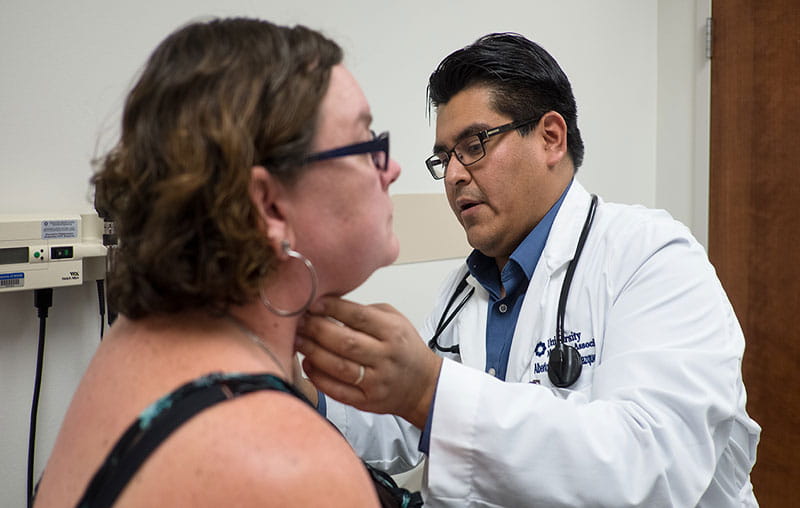In the United States, 300,000 children have arthritis. Symptoms can range from mild chronic aches to debilitating pain. It can be tricky to diagnose and challenging to treat.
Despite its challenges, “we’re optimistic about juvenile arthritis,” said Dr. Anthony Infante, pediatric immunologist and co-leader of the pediatric immunology and rheumatology clinic at University Health, and professor at UT Health San Antonio.
Researchers are learning a lot and new medications are coming online – and half of children go into remission from juvenile idiopathic arthritis as they reach adulthood.
“We used to call it rheumatoid arthritis,” he said, “but there are enough differences with what adults have” to distinguish it and treat it differently.
Solving the inflammatory mystery
Figuring it out is the first step. The symptoms can also point to other ailments, and when they first present in a child, the path to diagnosis sometimes takes a family through visits with orthopedists and sports medicine specialists. Or they may first come to Dr. Infante or Dr. Edward Brooks at the Pediatric Immunology and Rheumatology Clinic, and then be referred to orthopedics, Dr. Infante said. Many cases are obvious, he said, but sometimes it’s subtler than that.
“Increasingly, we see kids with fibromyalgia,” he said. Other inflammatory disorders such as lupus might also be the culprit. To identify juvenile arthritis, Dr. Infante looks for not just painful joints, but inflamed, swollen, red joints that are warm to the touch.
“That tells us that the body’s immune responses are active,” he said. “There also can be inflammatory markers in the blood.”
While in some parts of the country, there have been reports of Lyme disease misdiagnosed as juvenile arthritis, Dr. Infante notes that is not as likely here, where Lyme disease is not endemic.
“I have yet to make a Lyme arthritis diagnosis in Texas,” he said.
Many treatment options available
Once identified, juvenile arthritis can be treated with a variety of medications, ranging from NSAIDs (nonsteroidal anti-inflammatory drugs like ibuprofen) to second- and third-tier medications like methotrexate and biological drugs, which are among the fastest-growing classes of drugs in the country, Dr. Infante said.
One big hurdle in treating juvenile arthritis is helping the family accept the diagnosis on an emotional level and understand how to move forward, he said.
“I spend an hour or more with families when I first diagnose a patient, and a lot of time afterward,” he said. “It’s crossing that threshold – it requires a lot of acceptance that this is the new normal.”
That includes an explanation of the disease and its treatments, what that means for daily life activities, like going to school, and approaching the situation with pain treatment as well as disease treatment. There’s also money.
“A lot of the medications are expensive,” he said, so families may need help navigating insurance and coverage options.
The right kind of exercises can help. “Some patients have mobility issues, so we work with occupational therapy and physical therapy to help get that back to normal.”
Diet doesn’t play a big role in the treatment plan, but Dr. Infante noted that while data is mostly anecdotal, there is some evidence that turmeric has useful anti-inflammatory properties.
To schedule an appointment at the immunology clinic, parents will need a referral from their primary care provider.




